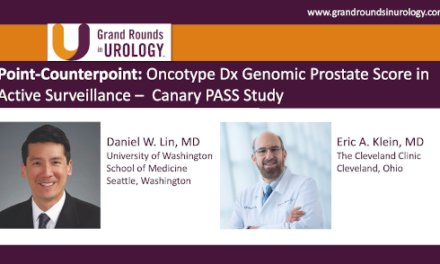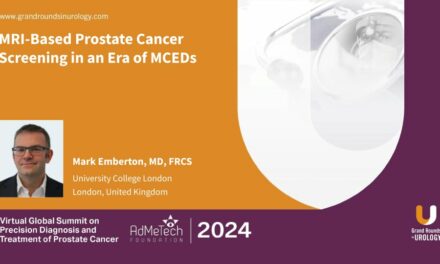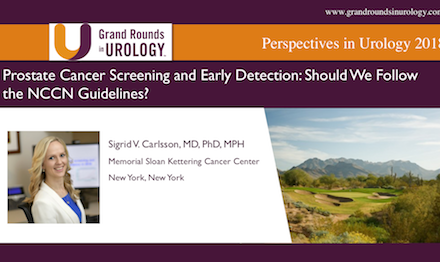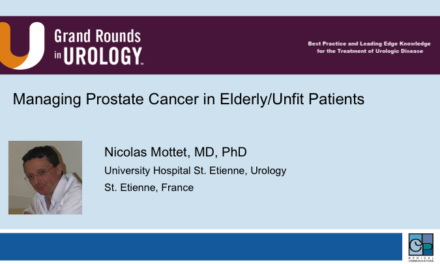
PCa Commentary | Volume 201 – May 2025
Posted by Edward Weber | May 2025
UPDATE of the PATCH TRIAL — and Information About Transdermal Estradiol Usage.
Brief Review of Findings in the Original Langley Abstract Presented at Eur Soc Med Oncol, Sept. 2024:
The PATCH Trial established that transdermal estradiol (tE2) patches were equally effective as Lupron in achieving metastasis-free and overall survival in newly diagnosed men with locally advanced (Stage M0) or node-positive prostate cancer (Stage N1), and also in men relapsing with PSA doubling times of < 9 months and PSAs > 20 ng/mL. Patches lowered testosterone (T) to an equal extent as Lupron (but more rapidly) and in each group T was maintained at < 50 ng/dL and estradiol (E2) was maintained at >250 pmol/L ( normal E2 in adult males ~130 pmol — Chadid et al., J Endocr Soc. 2019). E2 was associated with fewer hot flushes (44% vs 89%), improved bone density, and both groups had similar low rates of cardiovascular adverse effects ( ~ 7-10 each). Gynecomastia developed in 85% of men on patches vs. 42% on Lupron, which was partially prevented by pre-treatment radiation to breast tissue. Langley concluded, “Transdermal estradiol (tE2) should be a standard-of-care ADT option in MO and N1 disease.” (Link to Vol # 195)
Evaluation of Efficacy and Safety of Patches in Treatment of Metastatic Disease (Stage M1):
The Phase III Trial that established the efficacy of tE2 in non-metastatic disease had a second component testing tE2 patches in men with metastatic disease. It compared Lupron + an androgen signaling receptor Inhibitor (ARSI), i.e., Xtandi or Zytiga, vs. tE2 + an ARSI. M1 stage prostate designates spread to lymph nodes beyond the pelvis, skeletal metastases, and involvement of viscera, i.e., liver, lung, or elsewhere. The results of this trial were presented at ASCO 2025 Genitourinary Symposium by James, Gilbert, Langley et al. tE2 involved using 3 100mcg per 24 hours patches changed twice weekly until the T level achieved <30 ng/dL, then changed to twice weekly. 79 men were randomized 1:1. The median baseline PSA was 43.3 ng/mL.
Findings:
- In both groups, at 6 months, 61% achieved a PSA of <2 ng/mL, and showed a PSA decline lower than 90% of the baseline PSA.
- Gynecomastia developed in 35% of men on tE2+ARSI compared to 17% on Lupron+ARSI.
- Any hypertension was seen in 17% (Lupron+ARSI) vs 5% (tE2+ARSI).
- tE2 patches were associated with reductions in hot flushes, improvement in bone density, and improved overall quality of life.
Authors’ Conclusion: “PSA responses are similar in [M1] pts treated with tE2+ARPI and Lupron+ARPI … providing patients with ADT choices about expected toxicity profiles …and mode of administration.”
Practical Issues Regarding Patch Usage:
- Patches are best placed onto non-fatty tissue in the mid-abdomen or upper buttocks, since fat decreases E2 absorption. Scrotal application is particularly effective and achieves high E2 levels.
- To convert E2 values expressed in pg/mL to pmol/L, multiply pg/mL by 3.676.
- The normal mean E2 levels in adult males range between 154 and 174 pmol/L; with androgen suppression, it falls to 11 pmol/L. In the PATCH trial E2 level was sustained at >250 pmol/L.
- After patch placement, the estradiol rises rapidly but falls substantially by 72 hours, so to keep the level >250 pmol, evaluating the serum level at 72 hours after placement would offer guidance. (Stanczyk, AM J Obstetric Gynecologist. 1988)
- During patch therapy, the serum E2 can vary widely.
- For those men not closely following their E2 levels, adhering to the PATCH protocol E2 regimen and periodically checking serum E2 levels and T levels could be a reasonable plan.
- After patch removal, the skin may be sticky. JJ Care Adhesive Removal Wipes (Amazon.com) can be helpful.
Review and Comment regarding the PATCH Trial: “A Repurposing Program Evaluating Transdermal Oestradial Patches …” Clinical Oncology. 2024, Gilbert, Langley et al.
In addition to noting the similar PSA responses in both combinations, the authors highlighted the superiority of tE2+ARSI with regard to fewer hot flushes and a significant benefit in improving bone density. The study documented a decreasing bone density of -3% for Lupron+ARSI vs. a 7.5% gain for tE2+ARSI — a 9.3% difference. E2 patches are significantly less expensive than Lupron, and no injections are required. Information regarding overall survival will be forthcoming.
An observation of note was based on the more rapid decline in T with tE2 compared to Lupron, suggesting that “tE2 could be an option for short-term (i.e., 4 months) ADT used in combination with radical radiation therapy in early-stage disease, with reduced sexual dysfunction, less fatigue, and reduced gynecomastia.
“Add-back” lower-dose tE2 in combination with ADT:
While full dose tE2 is required to fully suppress testosterone, a lesser dose can be used along with ADT to suppress hot flushes, fortify bone density, lessen fat gain, and cause less gynecomastia. This issue was addressed by Russell et al., ‘Estradiol for the mitigation of adverse effects of androgen deprivation therapy,” Endocrine-Related Cancer. 8/2017. They list the benefits of add-back E2 in men undergoing ADT: Improved bone density and bone strength, less fat gain, improved insulin effectiveness, reduced hot flushes, improved sexual performance, and possibly improved cognition and decreased depression.
A small study by Gerber et al., Urology 2000, reported that in men receiving ADT that one 0.1 mg tE2 patch changed twice weekly raised baseline E2 from 44 pmol/L to 99 pmol/L, leading to a significant reduction in hot flushes. ”Mild painless breast swelling and nipple tenderness were noted.”
Bottom Line:
The superior performance of transdermal estradiol (tE2) in therapy for both non-metastatic and metastatic prostate cancer in comparison to conventional Lupron or Lupron+ARSI offers new options for prostate cancer management with an improved adverse effect profile.
Your comments and requests for information on a specific topic are welcome e-mail ecweber@nwlink.com.
Please also visit https://prostatecancerfree.org/prostate-cancer-news for a selection of past issues of the PCa Commentary covering a variety of topics.
“We appreciate the unfailing assistance of the librarians at Providence/Swedish.”
ABOUT THE AUTHOR
Edward Weber, MD, is a retired medical oncologist living in Seattle, Washington. He was born and raised in a suburb of Reading, Pennsylvania. After graduating from Princeton University in 1956 with a BA in History, Dr. Weber attended medical school at the University of Pennsylvania. His internship training took place at the University of Vermont in Burlington.
A tour of service as a Naval Flight Surgeon positioned him on Whidbey Island, Washington, and this introduction to the Pacific Northwest ultimately proved irresistible. Following naval service, he received postgraduate training in internal medicine in Philadelphia at the Pennsylvania Hospital and then pursued a fellowship in hematology and oncology at the University of Washington.
His career in medical oncology was at the Tumor Institute of the Swedish Hospital in Seattle where his practice focused largely on the treatment of patients experiencing lung, breast, colon, and genitourinary cancer and malignant lymphoma.
Toward the end of his career, he developed a particular concentration on the treatment of prostate cancer. Since retirement in 2002, he has authored the PCa Commentary, published by the Prostate Cancer Treatment Research Foundation, an analysis of new developments in the prostate cancer field with essays discussing and evaluating treatment management options in this disease. He is a regular speaker at various prostate cancer support groups around Seattle.




